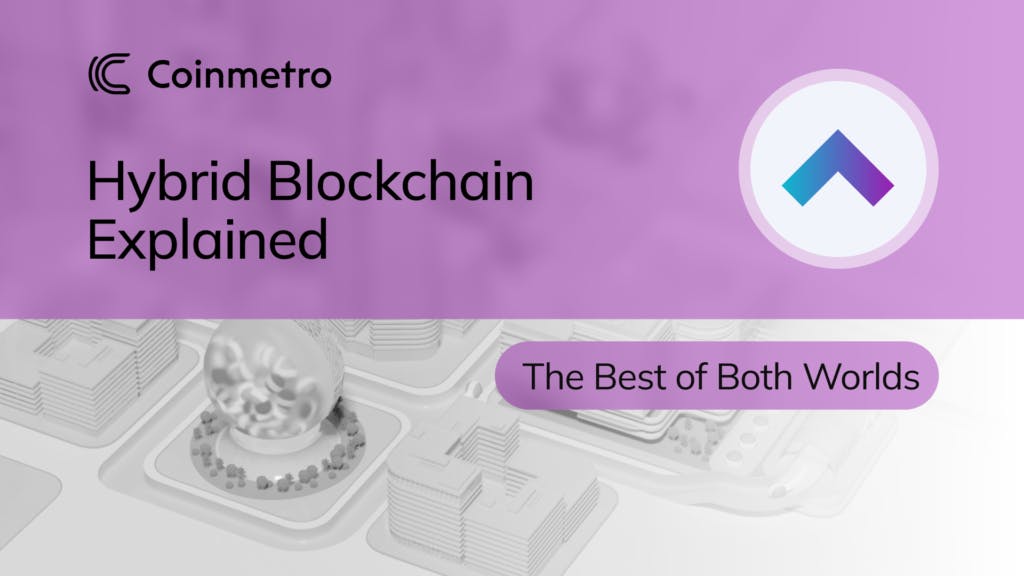Hybrid Blockchain Explained
December 5, 2025

by Kamil S
December 5, 2025
What is a hybrid blockchain? Is it indeed “the best of two worlds”?
There are public, private, and consortium blockchains you may have heard about, but in this series of articles, we are going to dig deeper into hybrid blockchains: what they are, how they work, and where their value lies.
In essence, a hybrid blockchain is a combination of private and public blockchains. The most valuable components of the two are blended to create a unique type of blockchain – a hybrid blockchain.
As the name suggests, a public blockchain is open to all, meaning that anyone can participate in it, but also anyone can create a public chain. Bitcoin is a public blockchain, for example.
A private blockchain, on the other hand, is managed by an authority limiting access to the blockchain. In simpler terms, users need to get access to a private blockchain before they can start using it. Compared to public blockchains, private blockchains are much faster because the network is managed by several trusted nodes aiming to benefit the entire network.
Now, the design of a hybrid blockchain is distinguishable in that it is not open to everyone but is still based on the general blockchain features – integrity, transparency, and security.
What are the benefits of hybrid blockchains that make them valuable?
Firstly, a hybrid blockchain offers privacy yet still enables communication with third parties.
Secondly, a hybrid blockchain offers better scalability than a public blockchain. As a result, transactions are cheap and fast.
But how are low fees made possible? Transactions in a hybrid blockchain are cheap because the chain entails the most powerful nodes to verify them. The nodes facilitate transaction verification, which results in much fewer nodes verifying a single transaction as compared to any public network.
As mentioned previously, the hybrid blockchain design is distinguishable in that it is not open to everyone but still offers such blockchain features as integrity, transparency, and security. The members of such a blockchain can choose its participants as well as decide which transactions to make public. In other words, a hybrid blockchain can be entirely customized.
The LTO Network is a great example of a hybrid blockchain. It focuses on decentralized identities (DIDs) and verifiable credentials (VCs) to help improve existing identification methods, replacing anonymity with privacy.
To explain further, the network’s identity node combines VCs with public key certificates. The latter form on-chain trust networks. This allows the network to present a permissionless solution that doesn’t rely on network-appointed trusted parties.
- Learn more about the LTO Network from our introductory guide.
Tags
Related Articles

Regulatory Sandboxes: Fostering Crypto Innovation Within Legal Frameworks
The cryptocurrency industry’s fast rise fuels an important debate. Innovation aims to transform finance, enhancing speed and access. Yet, regulators…
5m

Crypto Options Trading: Strategies and Market Insights
Cryptocurrency markets have rapidly expanded beyond simple buying and selling. One of the most significant developments has been the rise of…
6m

The Rise of Social-Fi: Blending Social Media with Decentralized Finance
In recent years, social media and finance have started to merge, creating Social-Fi. This concept blends the engagement of social platforms with…
6m

DeFi Insurance Platforms to Watch in 2024
Decentralized Finance (DeFi) insurance addresses the growing need for insurance against hacks, smart contract failures, and other DeFi-related risks.…
7m